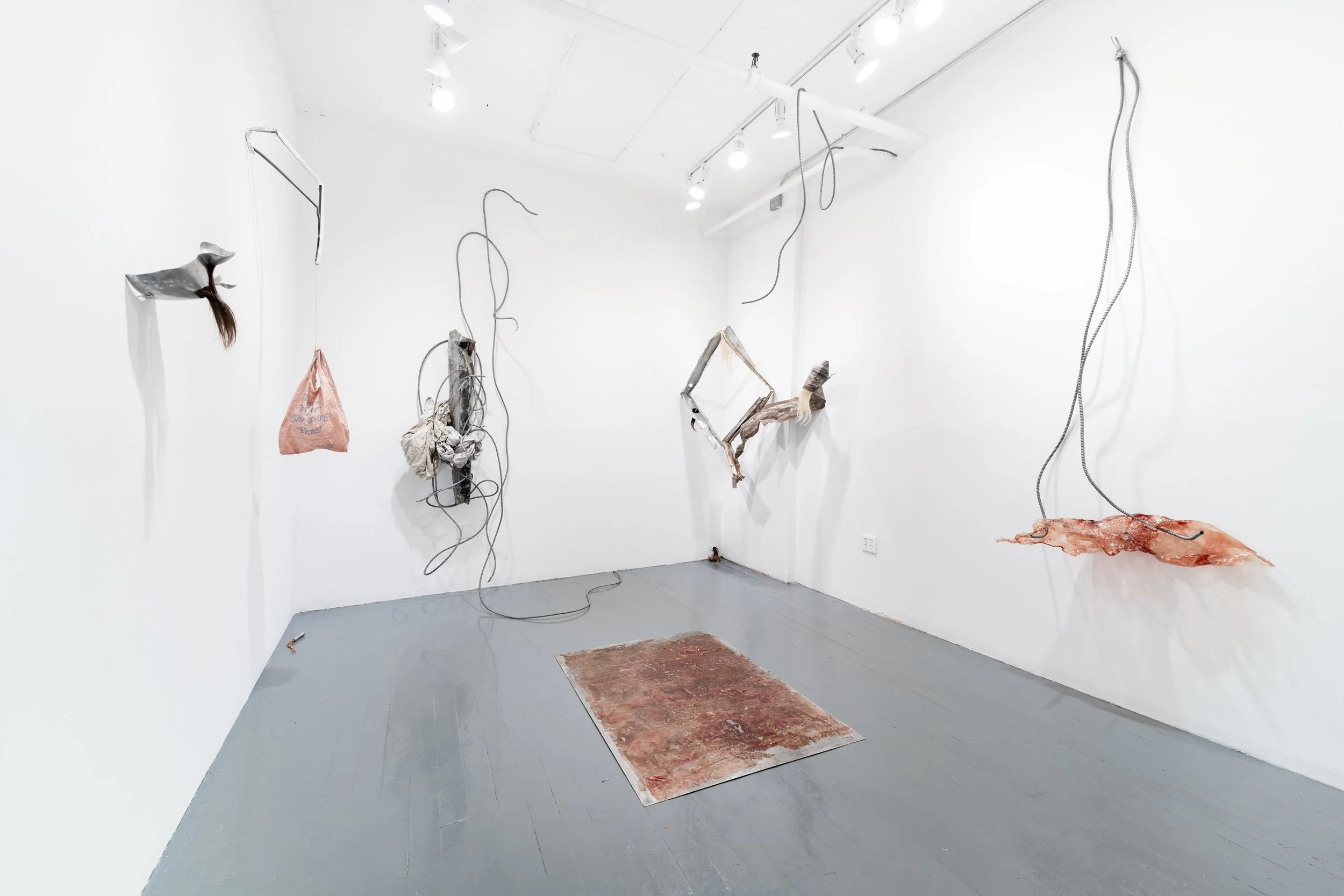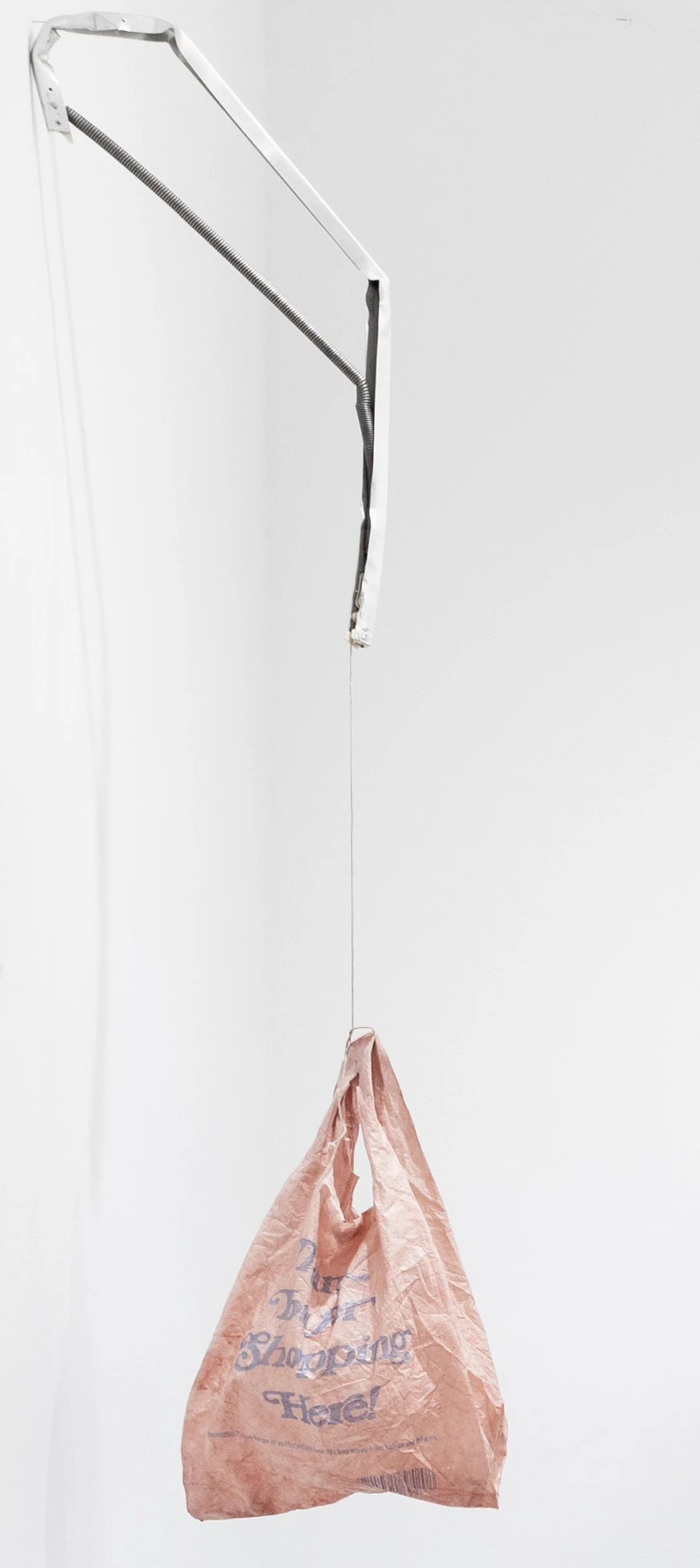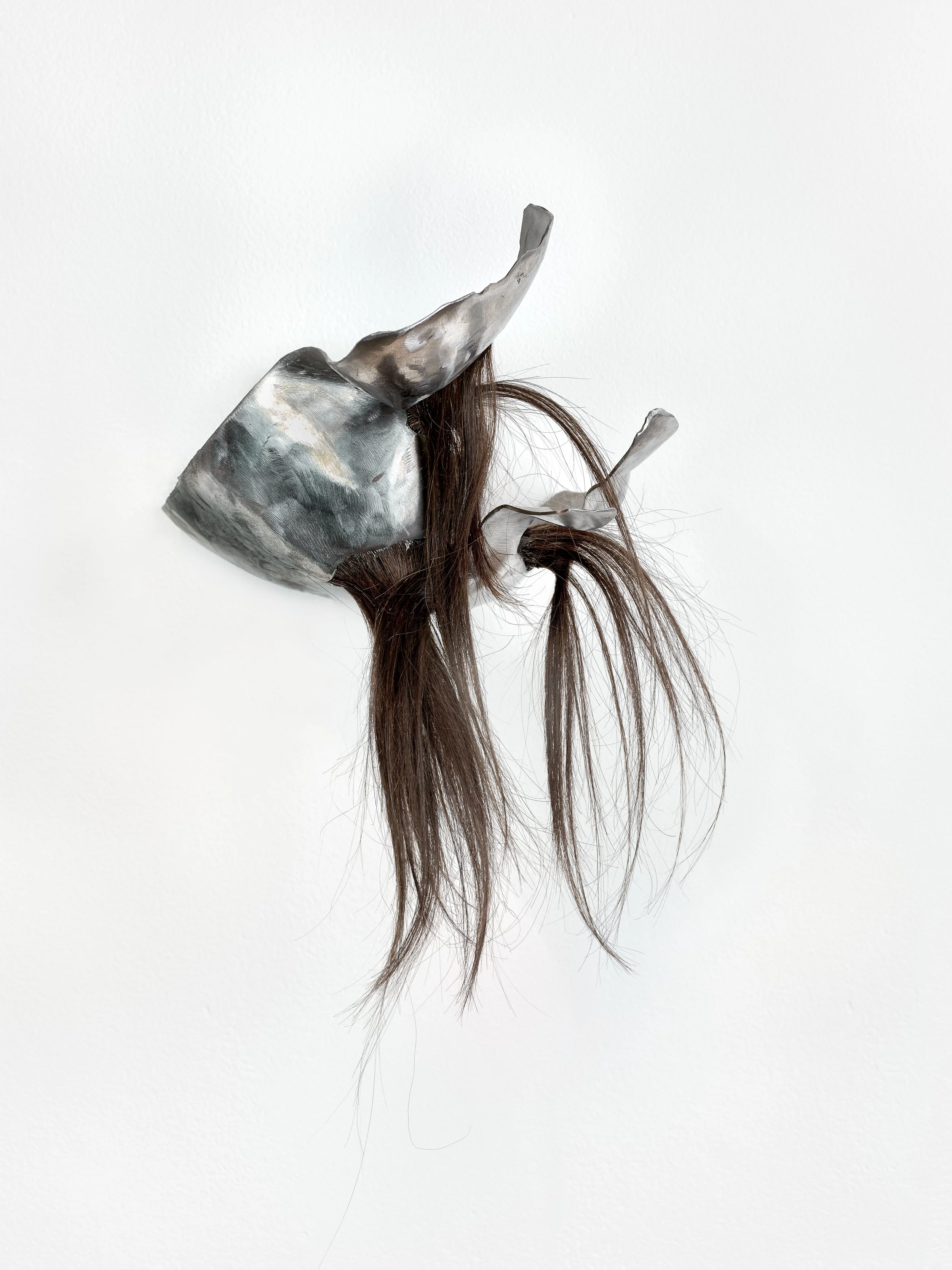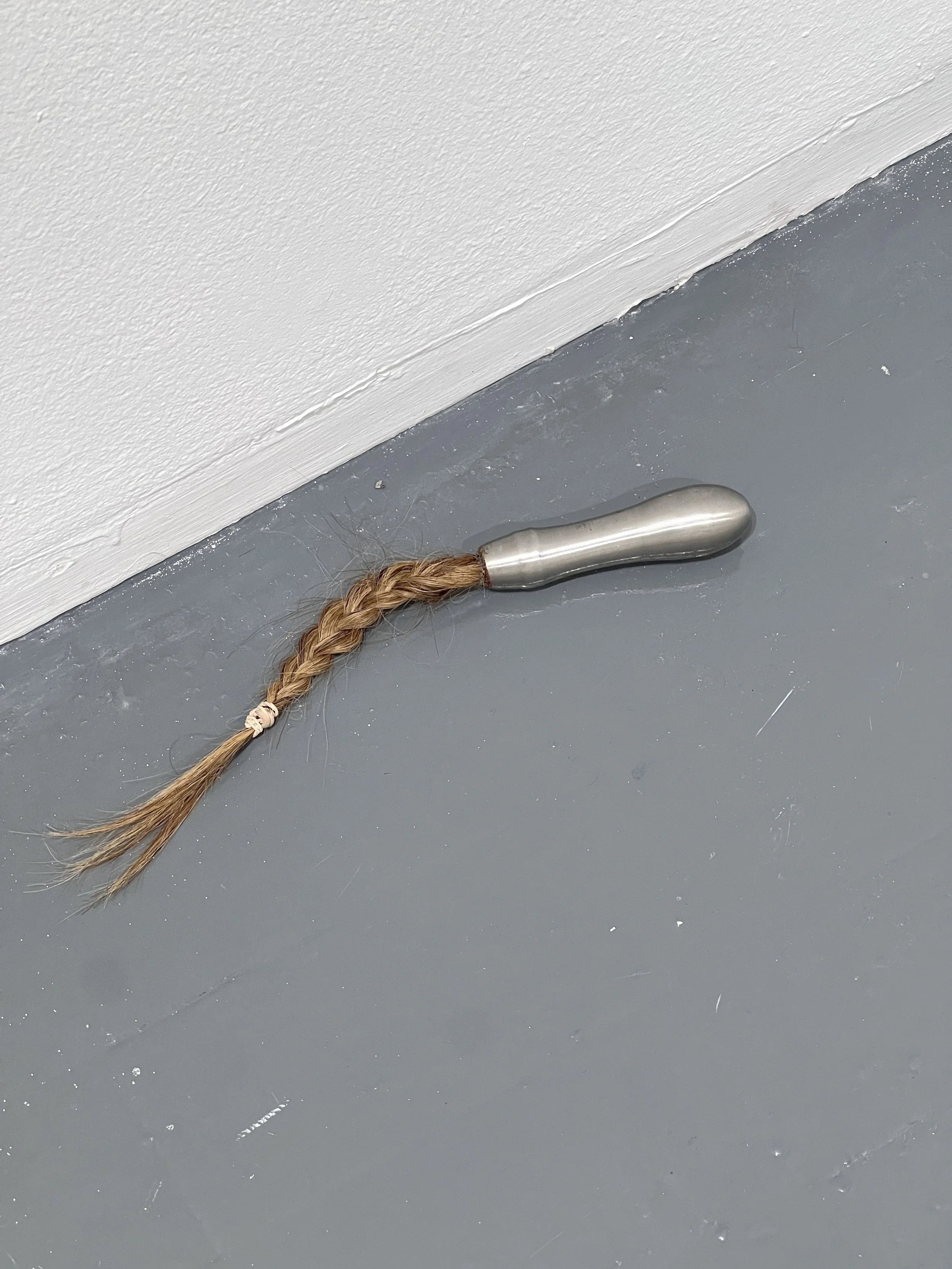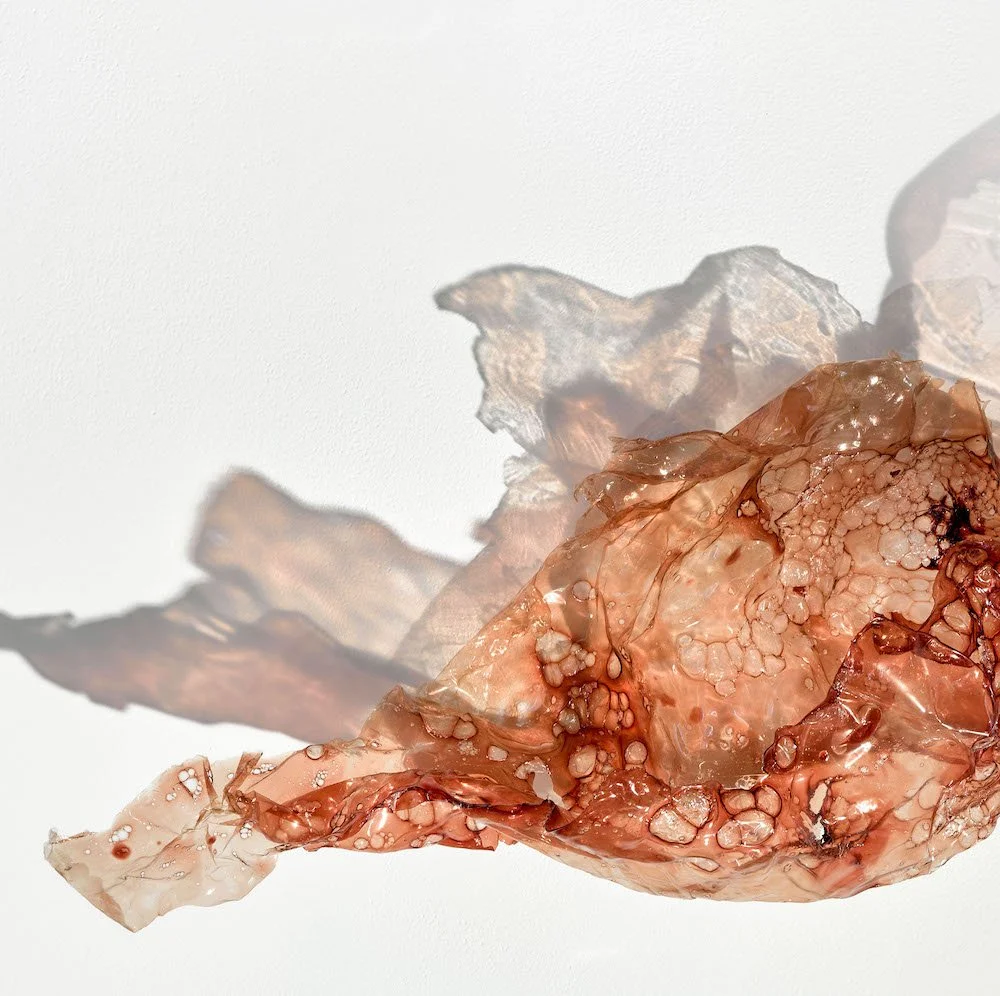Blood, Skin, and Metal
Installation view of the show under review. Image courtesy of the artist.
Art is in Magdalena Dukiewicz's blood, and her blood is in her art. The title of her exhibition, curated by Dominika Tylcz, is itself an object of art, with the "a" in (a)biotic couched between parenthesis, giving it a double meaning. The parentheses are a linguistic — as well as epidermal — construction, reflecting the flux between biotic and abiotic, alternating between organic and processed matter. It is one or the other — or possibly both.
Dukiewicz’s exhibition displays remnants of a prospective post-nuclear disaster, laid before our eyes for peaceful contemplation. Frozen here, in space and time, is the explosive relationship between humanity and technology.
Object #10, 2023, metal scrap, rope, shopping bag dyed in artist’s blood, 10 x 12 x 42 in. Image courtesy of the artist.
Beginning with Object #10, a shopping bag dyed with the artist's blood, we see Dukiewicz's very DNA imprinted upon the work. As did Andres Serrano and Kiki Smith, Dukiewicz transfers a biological part of the self into art. The bag resembles a hanging, alerting us that blind consumerism will eventually lead to our bloody demise. We literally suffocate in the bottomless bag of materialistic consumption.
Object #1, 2022, human hair and steel, 9 x 12 x 8 in. Image courtesy of the artist.
Object #1 resembles a metal head plate — albeit distorted — replete with the hair of said individual remaining. It is a fusion of the harsh ingenuity of industry with the gentle harmony of biology. Masculine metal (the knight) and feminine hair (the maiden), as extremities, and as in mythological history, become unified: the matrimony of modern humanity itself with modern humanity's facility.
Object #11, 2023, human hair and metal, 8 x 2 x 2 in. Image courtesy of the artist.
Near the corner on the floor, almost as an afterthought, lies Object #11, which appears to be a bullet, or missile, sprouting a girl's pigtail; yet it also resembles sperm. A sense of androgyny manifests, where the power of war yields an underlying result of birth and rebirth — again, as in Object #1, a merger of feminine and masculine symbols.
Object #5, 2022, human hair and zinc, 36 x 48 x 24 in. Image courtesy of the artist.
Transportation is literally the process of getting from one point to another. And with Object #5, we see a convoluted, meandering journey personified — via human hair — and shaped by what appears to be the remains of a vehicle bumper. Transportation could be seen as an accident waiting to happen, as a road made of metal becomes simultaneously the means and the journey between two points.
Detail of Object #9, hydrolyzed collagen, artist’s blood, and electric wire, 29 x 7 x 22 in, ~12 ft wire. Image courtesy of the artist.
Resembling an object floating down into the depths of water, Object #9 recalls a dying jellyfish — with the wire becoming a directional reflection of the long path of descent to obscure regions. The ocean is symbolically associated with consciousness, and here we experience the possible death of a notion, or idea within the abyssal unconscious.
Object #14, 2023, collagen, glycerin, artist’s blood, polished steel, 36 x 48 in. Image courtesy of the artist.
Object #14 utilizes hydrolyzed collagen, glycerin, and polished steel. The epidermis is applied with the artist's blood and then placed upon the steel. Flush upon the floor, it defies comparison as a painting and instead becomes the foundation of the exhibition. This piece could also signal a mirror, albeit a distorted one, reflecting a kind of biological/technological compression of our absorption into metal. Ultimately, we cannot distinguish our tools from our very selves.
(a)biotics is the thread of humanity winding through civilization and technology, reminding us of the looming ultimatum of nuclear war. Dukiewicz juxtaposes zinc — the "skin" of technology — with the collagen-based skin of our own biology. The work is a statement of potentially volatile elements which cancel each other out: mutually assured destruction. In other words: we create ourselves as we create technology, and if we lose ourselves in this process — without reverence to the natural order and our own biology — we may create our own collective demise.
Magdalena Dukiewicz: (a)biotic factors
Curated by Dominika Tylcz
March 31 to April 29, 2023
GHOSTMACHINE
373 Broadway, #B19, New York, NY 10013

